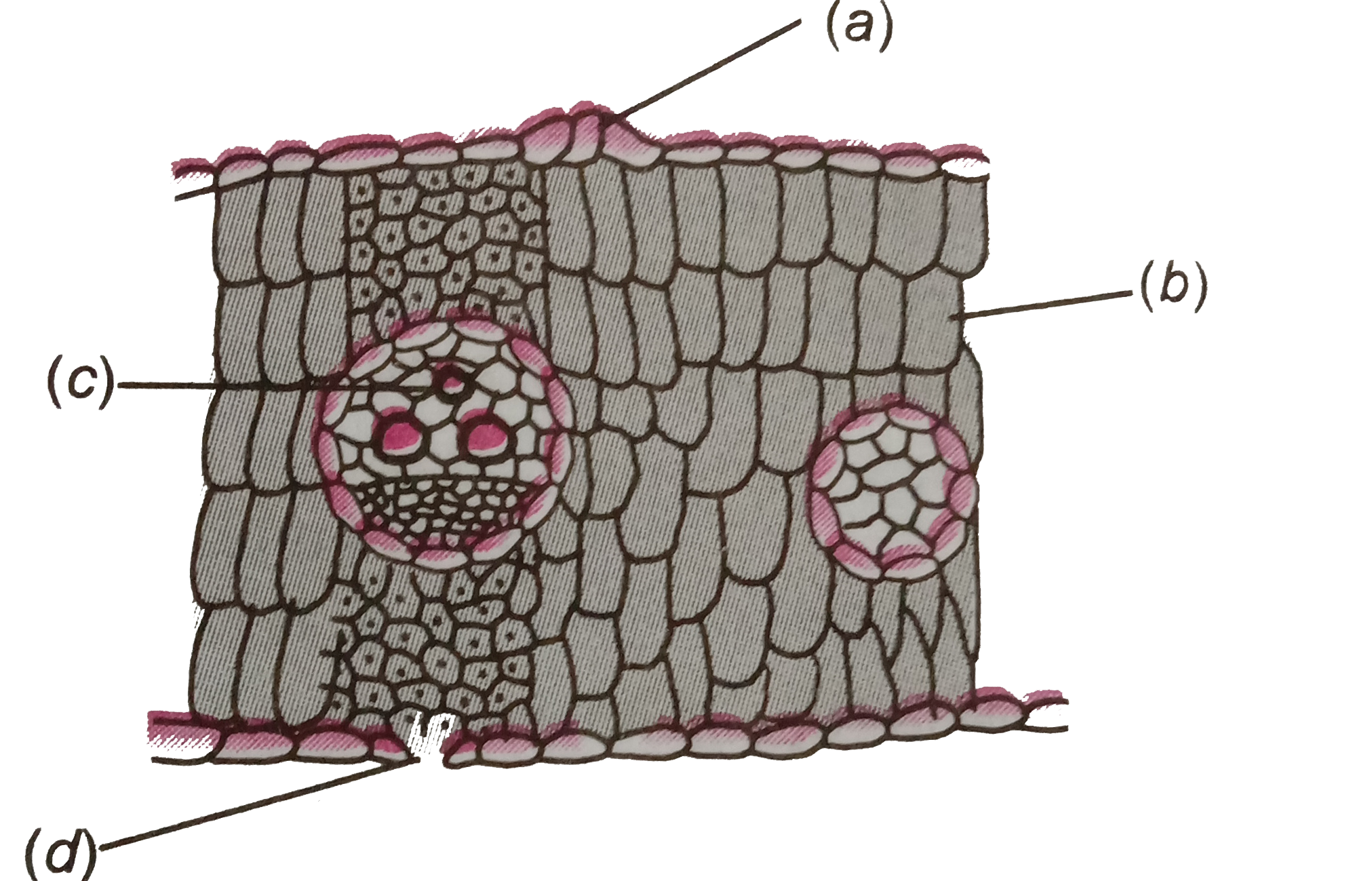In monocot leaf
Bulliform cells are absent from the epidermis
Veins form a network
Mesophyll is well differentiated into these parts
Mesophyll is not differentiated into palisade and spongy
parenchyma
The correct Answer is:D
To answer the question regarding the characteristics of monocot leaves, we will analyze each of the given statements step by step:
1. Statement Analysis:
- Statement 1: "Buliform cells are absent from the epidermis."
- Analysis: This statement is incorrect. Buliform cells are indeed present in monocot leaves, particularly in grasses. They play a crucial role in the curling of leaves to minimize transpiration loss. Therefore, this statement is false.
2. Statement 2: "Veins form a network."
- Analysis: This statement is also incorrect. Monocot leaves exhibit parallel venation, meaning the veins run parallel to each other. In contrast, dicot leaves display a network or reticulate venation. Thus, this statement is false.
3. Statement 3: "Mesophyll is well differentiated into these parts."
- Analysis: This statement is incorrect as well. Monocot leaves are classified as isobilateral leaves, which means they have a similar structure on both the upper and lower surfaces. The mesophyll in monocots is not well differentiated into distinct layers like palisade and spongy parenchyma, which are typically found in dicot leaves. Hence, this statement is false.
4. Statement 4: "Mesophyll is not differentiated into palisade and spongy parenchyma."
- Analysis: This statement is true. In monocot leaves, the mesophyll does not differentiate into palisade and spongy parenchyma as it does in dicots. Instead, it remains relatively uniform throughout the leaf structure. Therefore, this statement is true.
Conclusion: The correct answer is that the fourth statement is true: "Mesophyll is not differentiated into palisade and spongy parenchyma."
---
- Statement 1: "Buliform cells are absent from the epidermis."
- Analysis: This statement is incorrect. Buliform cells are indeed present in monocot leaves, particularly in grasses. They play a crucial role in the curling of leaves to minimize transpiration loss. Therefore, this statement is false.
- Analysis: This statement is also incorrect. Monocot leaves exhibit parallel venation, meaning the veins run parallel to each other. In contrast, dicot leaves display a network or reticulate venation. Thus, this statement is false.
- Analysis: This statement is incorrect as well. Monocot leaves are classified as isobilateral leaves, which means they have a similar structure on both the upper and lower surfaces. The mesophyll in monocots is not well differentiated into distinct layers like palisade and spongy parenchyma, which are typically found in dicot leaves. Hence, this statement is false.
- Analysis: This statement is true. In monocot leaves, the mesophyll does not differentiate into palisade and spongy parenchyma as it does in dicots. Instead, it remains relatively uniform throughout the leaf structure. Therefore, this statement is true.
Similar Questions
Knowledge Check
How a dicot leaf differs anatomically from a monocot leaf?
Aparallel venationBdifferentiation of palisade and spongy parenchymaCstomata only on upper sideDstomata on both sidesBundle sheath extensions in a dicot leaf and in a monocot leaf are ______and______respectively.
Aparenchymatous, collenchymatousBparenchymatous, sclerenchymatousCsclerechymatous, parenchymatousDcollenchymatous, sclerenchymatous
what differentiates a dicot leaf from monocot leaf
View SolutionDraw a neat labelled diagram of the vertical section of a monocot leaf.
View SolutionBundle sheath is absent around vascular bundles of
(a) dicot stem
(b) monocot stem
(c) dicot leaf
(d) monocot leaf
View SolutionHow would you distinguish a dicot leaf from a monocot leaf by external observations only ?
View SolutionSclerenchymatous bundle sheath around vascular bundles is seen in
(a) monocot leaf
(b) dicot leaf
(c) dicot stem
(d) monocot stem
View SolutionIn the diagream of T.S monocot leaf, identify labellings a,b,c,d with their funcation

(1) a-motor action, b-photosynthesis, c-conduction , d- transpiration
(2) a-motor action,b-conduction,c-photosynthesis, d- transpiration
(3) a- transpiration,b-photosynthesis, c - conduction, d-transpiration
(4) a-transpiration,b-conduction, c-photosynthesis, d- motor aciton
View Solution
